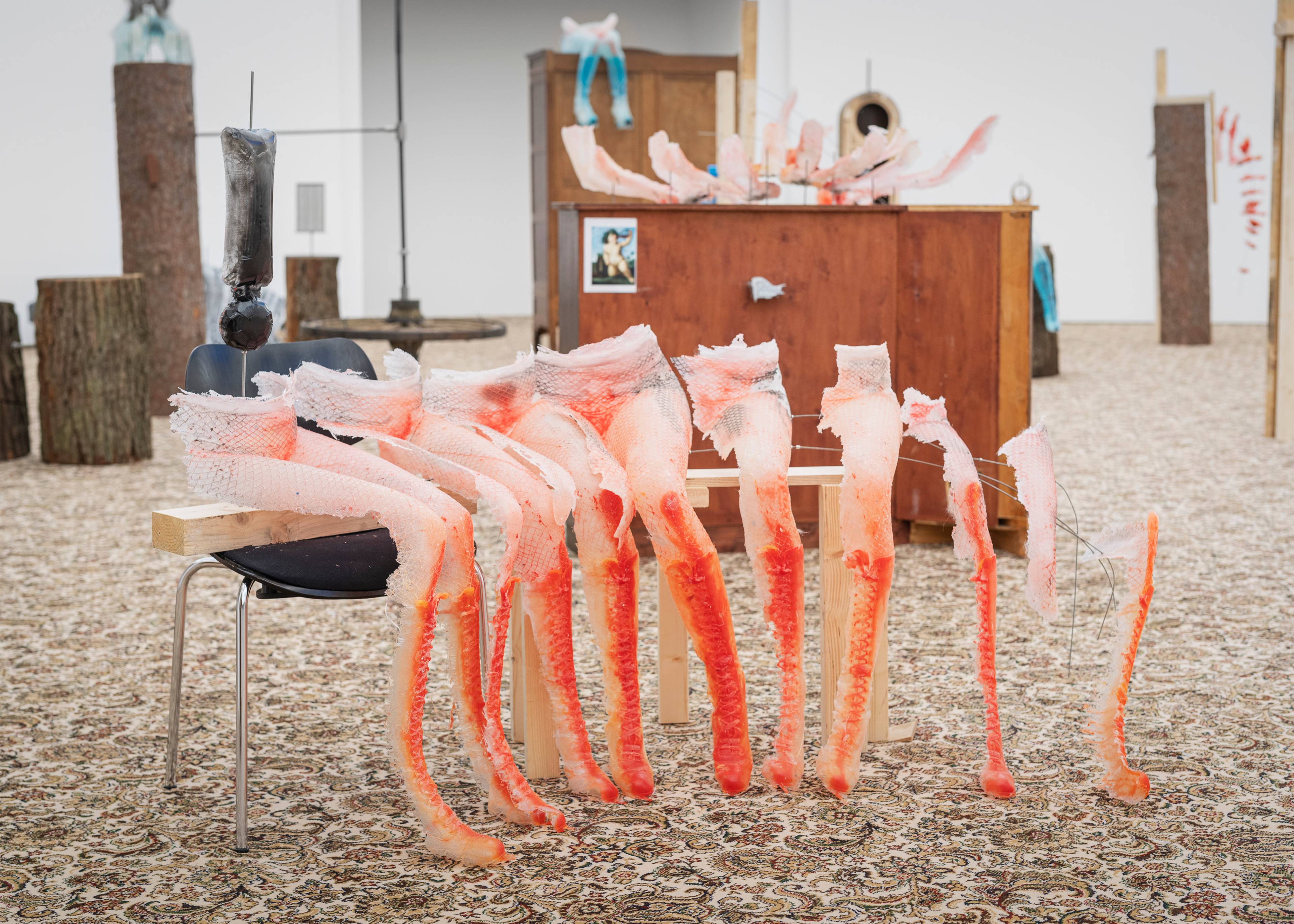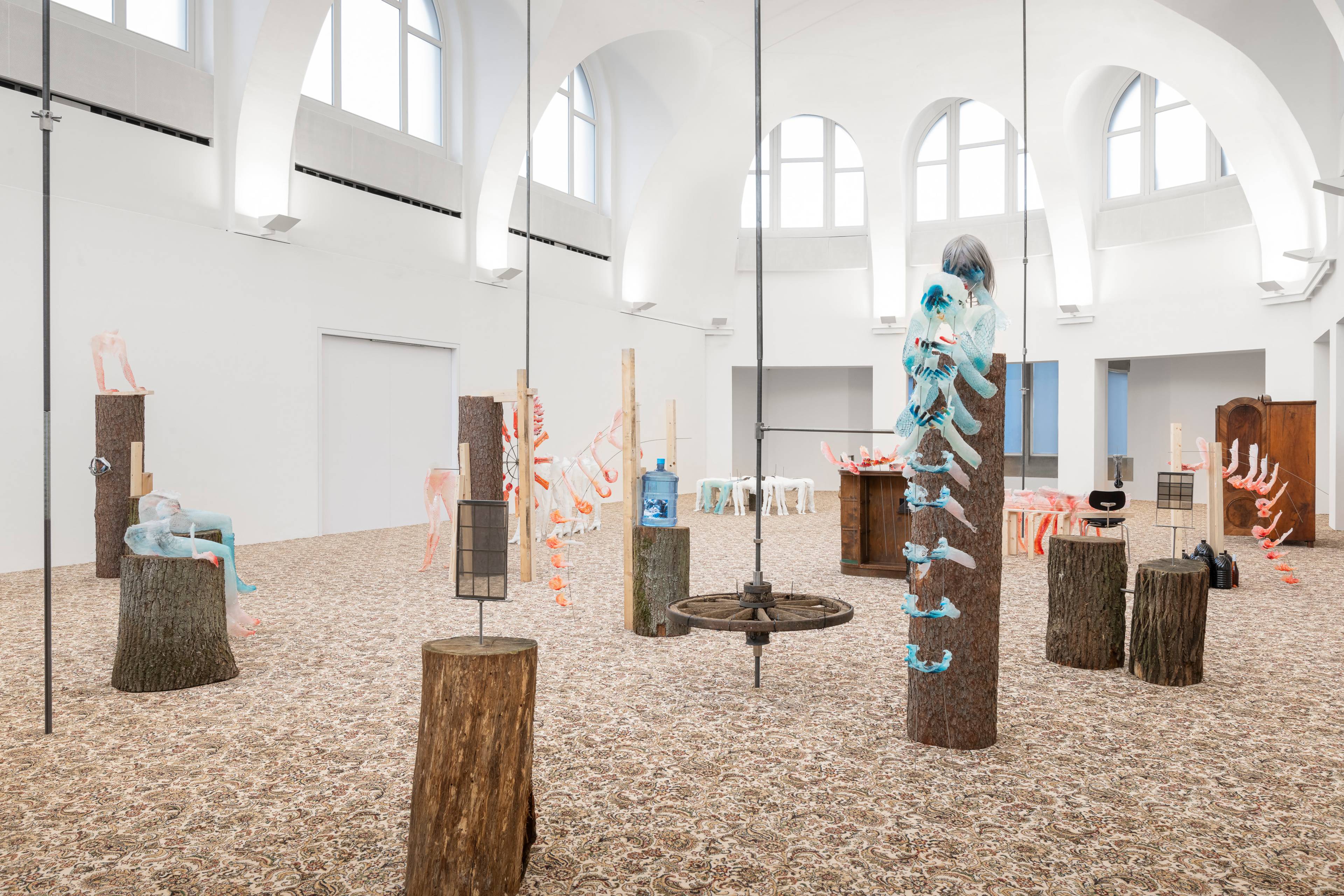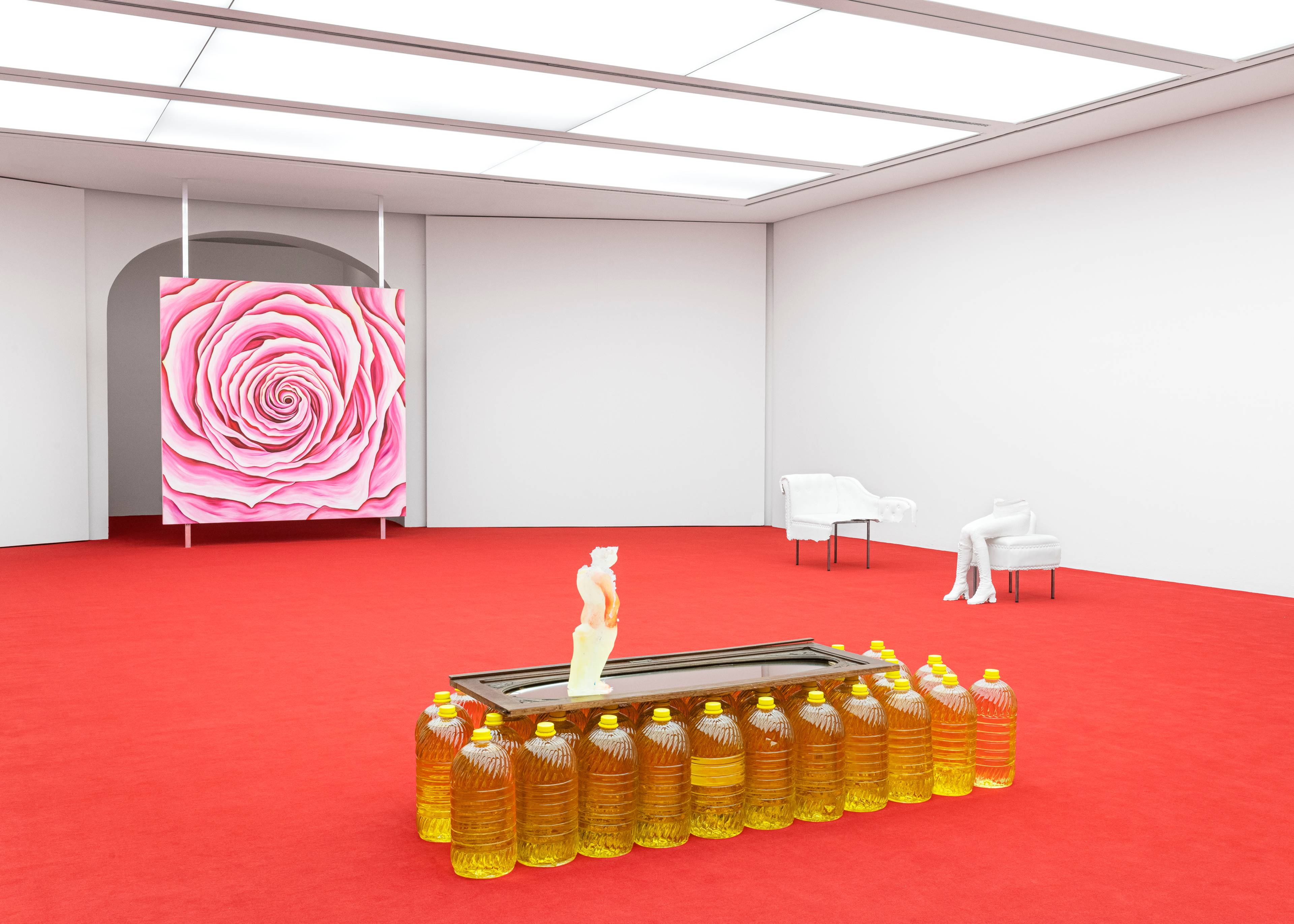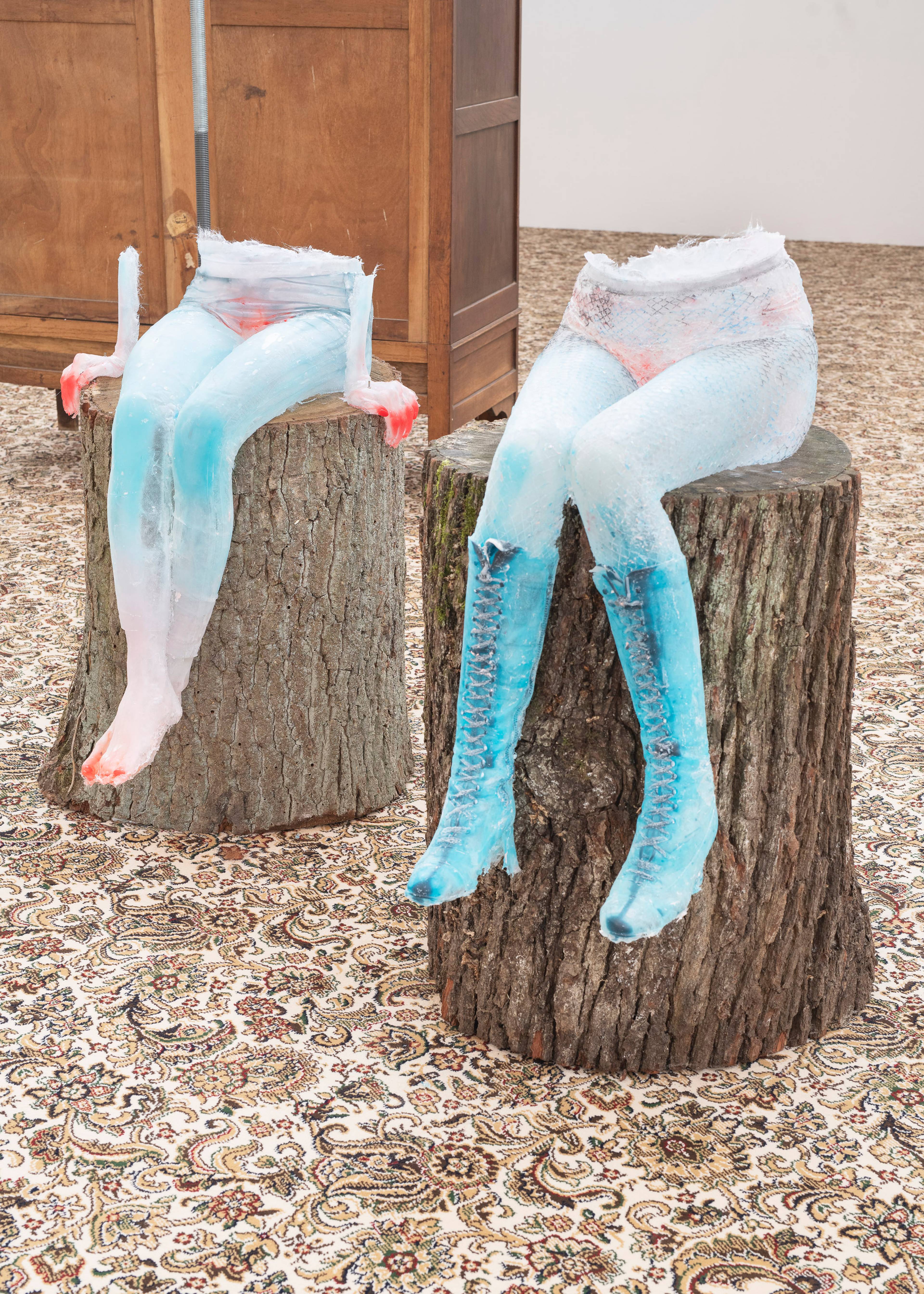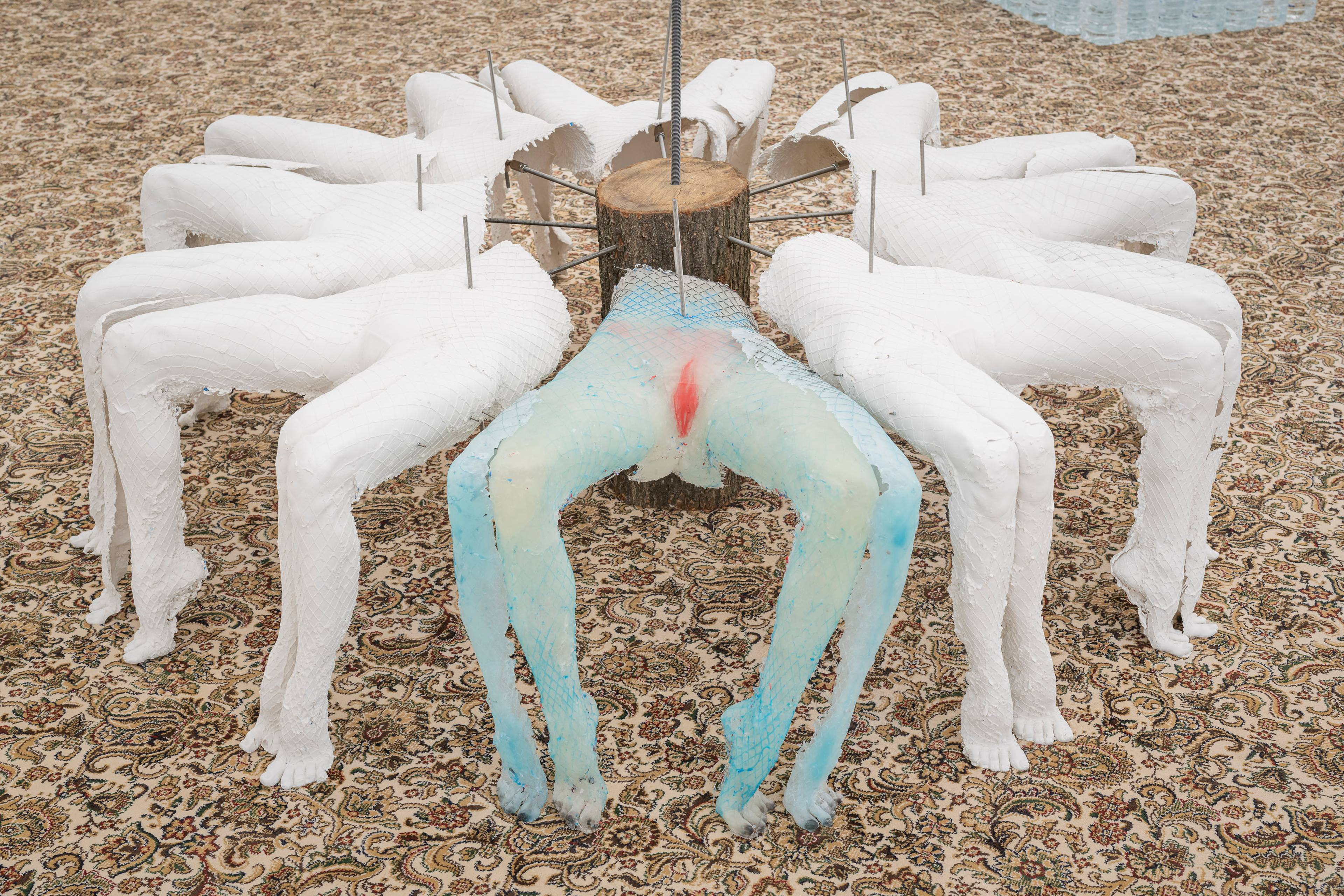A “period drama” refers to a genre of film or television production that sets its stories in recreated historical eras, defined by these past moments’ most characteristic aesthetics. As the title of Rebecca Ackroyd’s exhibition, it also alludes to the hormonal processes involved in reproductive cycles and the emotional turmoil that these can unleash. Its dual meaning orients the viewer through the artist’s use of technological gadgetry to undercut the biological and social structures that have long constrained the female body from without and within.
The exhibition seems to resemble a film set out of Stanley Kubrick’s filmography, not only in appearance, but also in its between-lines narratives and the overarching theme of social control. The association became obvious as I stepped onto the wall-to-wall carpet that covers Kestner Gesellschaft’s ground floor, Hall 2, in a deep red. The color’s strong presence throughout the exhibition aligns with the auteur director’s career-long search for moods and symbolism across numerous iconic scenes, such as the masqueraded orgy in Eyes Wide Shut (1999), replete with unlockings of suppressed desires and fears. Ackroyd’s invocation of the unconscious as a source of symbolic material manifests in the series of wide open and tightly closed eyes in black, red, and pink gouache and pastel, installed in the corridors around the floor’s central show space. Her work likewise resonates with violence, sex, and the id, but also proposes further associations with courses of reproduction.
In the middle of one gallery, a replica of the iconic Brussels fountain sculpture Manneken Pis (Little Pissing Man, 1619), Basement guy (2023), stands on a horizontal mirrored door, lain atop a rectangular group of full vegetable-oil bottles. The figure is surrounded by seven monumental, square oil paintings that seem to float in a semicircle of archways, all but one depicting black-andwhite or red turbines merged with contraceptive pill calendars (Empress (I-VI), all 2023). The seventh, High Priestess (2023), shows a close-up of a pinkpetaled flower, in the style of Georgia O’Keefe’s Abstraction White Rose (1927).
The elliptic, almost yonic mirror and the flower’s framing shifts the viewer’s divagation from engines to genitalia. The world around the infant seems to spin, dizzily pointing in its repetitions towards Alfred Hitchcock’s Vertigo (1958) and its ethos of obsession. The principle of circular motion underlying turbines and contraceptive pills reaches back through “Period Drama” to other works that enact architectures of control, such as Paul B. Preciado’s Testo Junkie (2008), which compares Jeremy Bentham’s panopticon with the round shape of oral birth control, chemistry turning consumer bodies into self-managed prisons.
The circular shapes continue upstairs in Hall 3, thickly carpeted in a beige-and-black floral pattern, where arrangements of resin limbs appear amid a forest of thick tree stems, steering wheels, silent clock casings emptied of their time-keeping mechanisms, and large wooden wardrobes, some outlandishly decorated with pairs of clasping hands. The constellation partially – and bizarrely – restages an interior from the Victorian era, when feminist movements leveraged the upheaval of industrialization against strict moralism and women’s disenfranchisement. In that context, prostitution offered a prospect of a kind of economic emancipation, yet ultimately begat new forms of social control, such as detentions for venereal infections.
Amid this arrangement, a standing group of blue, red, and silver legs wear heeled and laced knee-boots from the 1970s, cast from the waist after the artist’s own figure and those of other family members, including her mother. Another group of legs, We’ve Been Here Before (2023), is designed like wheel spokes around a vertical stem, their knees bent in a limbo-ish position, like the contorted sculptures of Allen Jones. One of the eight pairs of legs is dyed all in blue, except for a crude, red stain around the vulva; the remaining pairs are doubly cast in white, as in a “bullet time” camera sequence. Held together with metal sticks that perforate the casts’ bellies, the structure gruesomely evokes the circular treadmills widespread in Victorian prison labor.
Ackroyd’s drama deploys a pair of invisible battles: one waged between the symbolic manifestations of female desire and repressive moral standards, the other between reproductive technologies and the biological constraints that organize lifecycles. Contraception,embryo vitrification, and in-vitro fertilization have loosened the bonds these cycles once held on the body, but also ended up granting women accession into exploitative economic structures and, more contemporaneously, a culture of self-actualization incompatible with certain biological standards. Moreover, while technically accessible – if often illegally – reproductive rights remain yoked to widespread misconceptions and reactionary political debates. Thus, techno-optimistic interventions that appear emancipatory at first blush might ultimately serve to keep injustices intact.
Ultimately, the violence of Ackroyd’s world of dreams feels no less real than the successive backlashes against women’s achievements, emanating from a conservatism sustained since feminism’s origin moment. There, we see spirals not just in paintings and sculptures, but in the notion of how the past cyclically haunts the present.
___
“Period Drama”
Kestner Gesellschaft, Hanover
4 Nov 2023 – 18 Feb 2024


